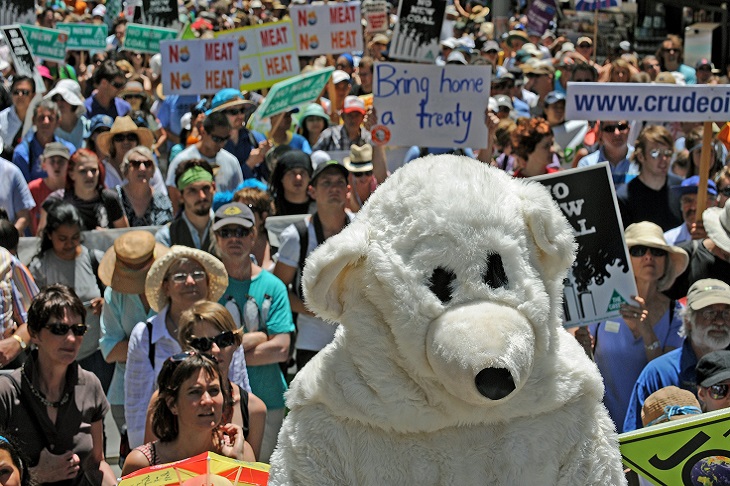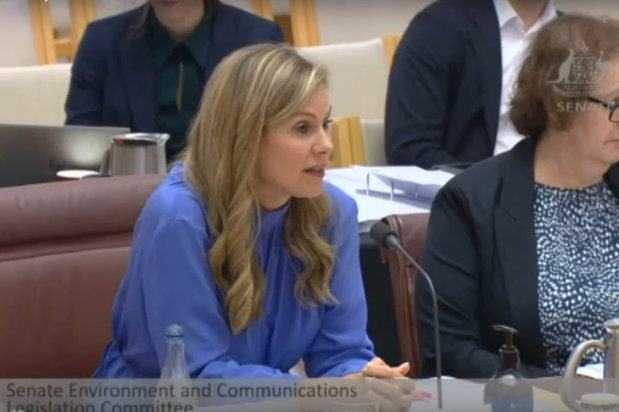Like many who pontificate on Climate Change, (such luminaries as Greta Thunberg), I am not a climate scientist, but I do have a scientific background and am well aware of how cherry picking numbers can produce whatever result you like.
As former British Prime minister, Benjamin Disraeli famously said, ‘There are lies, damned lies, and statistics.’
It is difficult to accept the current orthodoxy that temperature increases are due to human activity and carbon dioxide production. The International Panel for Climate Change (IPCC) was not established to find the cause of global warming; it was established to find evidence that CO2 was its cause and it has developed theories accordingly. The latest IPCC report followed that predetermined path.
A recent paper published in 2021 by 23 experts in the field from 14 countries, has reviewed publications and found a variety of possible conclusions, one being that all long-term changes can be explained by natural factors; this conclusion is far from the supposed consensus that the science is settled.
I am one of an increasing number of Australians (variously estimated as between 20-30 per cent) who remain sceptical.
The activism of Climate Change has filled the vacuum of virtue and is taking over from the worst aspects of religion. As cartoonist Bill Leak described, it has become as oppressive as Christianity used to be, and Islam still is in some parts of the world. It is disturbing that most media, including the ABC, do not even consider alternative theories in this field.
I do not doubt that, short term, the Earth is warming, but this is nothing new. The planet has been through many periods of extreme heat and cold, explained by varying distances from the sun, sunspot activity, solar wind etc. What suggests the current change is anything different? Other scientific opinions suggest another grand solar minimum (as caused the Little Ice Age) commenced in 2019; these usually lasts for 11 years, but this is predicted to continue as another Grand Solar Minimum until 2053; if correct it will result in revision of warming theory. These solar activity predictions fit with the known hot and cold periods of the last 2,000 years.
Temperature increases have also been recorded by NASA on our Moon, Mars, and Pluto. It is believed that these changes are due to altered planetary orbits and the sun’s activity; similar changes in the Earth’s orbit are known as Milankovitch cycles and influence Earth’s temperature.
Study of sediment and ice core samples demonstrates that CO2 levels have in the past been many times higher than now. CO2 has been sequestered into limestone, shells, coal etc, and is currently at an historic low level. All six major ice ages have occurred with CO2 levels ten times higher than now. An increase in CO2 has always followed, rather than preceded temperature increase. Why do we now view the relationship differently?
In recent history there have been periods of warm interspersed with cold. The Roman warming period of 2,000 years ago, (warmer than now) was followed by the cold period of the Dark Ages. The Medieval warming period was followed by the Little Ice Age, when sunspot activity was minimal; ice core samples confirm that this was the coldest period in 8,000 years. The Minoan warming period, over 3,000 years ago, was even warmer than now. These warm periods have been associated with increased food production and population expansion while the interspersed cold periods, brought famine, war, and disease. These changes relate to the increase or decrease in solar activity; history tells us the current changes are nothing new, why is this not discussed?
The latest warming period commenced with the nadir of the Little Ice Age in the mid 1700s, at the time of reduced sunspot activity known as the Maunder Minimum, long before industrialisation had caused CO2 levels to increase. Why do scientists now suggest a connection between the two? During this period, there has been a temperature rise of 1.5 degrees, something which has increased food production and reduced deaths from cold; the temperature will soon reach that of the Medieval warming period, one thousand years ago. These fluctuations fit precisely with changes in sunspot activity, with NASA predicting a period of cooling.

With industrialisation, there has been a steady climb in CO2 from around 200 ppm to around 400 ppm, this equates to an increase in air CO2 from 0.034 per cent to 0.038 per cent. The proposed reduction of 20 per cent of our CO2 production would result in a global atmospheric reduction of 00000016 per cent. Despite this slow rise, temperature increase has been intermittent, with pauses from 1940-70s, and from the start of this century. Computer modelling fails to explain what we know has already happened in the last 100 years, why should we think it will accurately predict the future?
There is no doubt that CO2 is a greenhouse gas, the question being the size of its forcing effect; physics suggests its major effect is at levels less than 100 ppm in the atmosphere and subsequent increases (now nearing 400 ppm) have little additional effect. Despite vast research it is still unclear what effect the major greenhouse ‘gas’, water vapour, has on temperature. Why is this significant source of potential inaccuracy being ignored?
Computer modelling algorithms also fail to include the more potent methane gas, as well as CO2 and sulphur dioxide (SO2), from volcanic eruptions, with several hundred sub-sea active volcanoes unaccounted for. The true believers worry about cow flatulence, they fail to mention the massive methane output from third world rice farms; and there is little assessment of output from active volcanoes. Land-based volcanoes also put out vast amounts of dust and SO2 which can lower temperatures; the eruption of Pinatubo in 2001 is estimated to have produced more CO2 than ever produced since the beginning of industrialisation, it temporarily reduced the Northern Hemisphere temperature by 1C.
How many more important factors, such as sunspot activity, cosmic radiation, or the planet’s orbit, are missing from computer simulations to add to their inaccuracy? There are no climate models which validate what we know has already happened in the last 100 years, yet they will apparently predict the next 100 years. At least there was a belated admission from IPCC that their computer models have overestimated warming.
Current CO2 and temperature increases have had the positive ‘greenhouse’ effect of increasing food production to compensate for increased global population numbers. Satellite photography shows increased greening at the periphery of deserts, increasing by 14 per cent over 30 years by 2016. NASA surveys over this time have found the area of greening of the planet equated to two times the size of Australia. Worldwide, crop yields of wheat, rice, and corn have more than doubled over 50 years. Isn’t this good news?
Regular apocalyptic predictions of ‘tipping points’ from politicians, rock stars, royalty, and the media have failed to eventuate. Even the IPCC admits major weather events are not increasing (tropical cyclones in the South have decreased to their lowest level in 500 years), sea level rise has not accelerated, Himalayan glaciers are not disappearing, the Arctic Sea ice has stubbornly refused to disappear (along with polar bears). In the Antarctic, giant calving icebergs create a media sensation, but are nothing new and mostly result from undersea volcanoes or the physical weight of ice breaking itself apart.
In our backyard, the Great Barrier Reef inexplicably survives. The latest scare was UNESCO’s downgrade of the reef health to ‘in danger’; to paraphrase the quote from Mark Twain: ‘rumours of its death have been greatly exaggerated’. The latest extensive surveys show strong regrowth following several bleaching events. A recent Senate inquiry found that only 3 per cent of the reef, those parts closest in, may be affected by farming runoff, the rest is too far offshore to be disturbed; annual coral growth rings show no change in the 100 years since farming was introduced. Why should we believe these increasingly desperate scare tactics by sections of the media and international organisations?
We are repeatedly told the end is nigh with ‘the hottest day since records began’, yet Australian records clearly show the hottest day ever was in 1826 (53.9C) and the hottest year 1896 (above 39C for 24 days straight). Why are temperature records being ‘homogenised’ (altered) to fit with the current inaccurate computer algorithms? Similar comments do not appear when the Northern Hemisphere, in 2021, experienced one of the coldest winters in living memory; the media are only interested in an increase in summer temperatures, the ‘hottest’ since records began.
There are always comments about death due to heat. A recent study reported in The Lancet estimated each year half a million die from heat compared with 4.5 million who die from cold. It appears more lives are saved than lost with warming.
Despite this country crippling itself by destroying baseload power generation, the major polluters, China (increasing CO2 by 3 per cent per annum) and India (increasing by 6 per cent annum), continue to build more coal-fired electricity generation and CO2 levels continue to rise; this disparity is not considered by the activists, as science has become politicised. It is fortunate that other sensible countries realise the importance of coal for electricity generation, particularly when politics intervenes, with the Russian invasion of Ukraine severely impacting coal and gas supplies to Europe.
Without the export income fossil fuels provide for Australia, we would have difficulty in maintaining the standard of education, health, and social services we currently enjoy. Apart from exporting manufacturing to other countries, what is Australia achieving by relying on expensive, subsidised, unreliable, renewable energy? Renewable subsidies totalled $60 billion in the 10 years to 2018. Nuclear power would have reduced costs and CO2 production, the reality of a looming power-generation deficit has meant that nuclear power needs to be back in favour.
As of September 28, 2021, 89 of 160 signatories had agreed to update their Paris Agreement targets. The latest target of Net Zero by 2050 has been agreed by 110 countries, including Australia. This country has already lost 75,000 jobs in manufacturing, with another 650,000 at risk from the 2050 Net Zero policy. China will continue to increase emissions for another 20 years, cheap energy allowing it to churn out wind turbines and 9 of the 10 solar panels we import, to undermine other countries’ efforts.
There has been an exponential increase in the IPCC and worldwide Climate Change bureaucracy. The massive amounts of money being spent on Climate Change politics have had little result and CO2 levels continue to climb. The UN statistics for the period 2005-19 showed Japan reduced emissions by 10 per cent, UK by 34 per cent, US by 13 per cent, Canada by less than 1 per cent, and Australia by 20 per cent. Meanwhile these efforts were comprehensively undermined by China’s 72 per cent increase, India’s 86 per cent gain, and South Korea’s 33 per cent. Despite the misleading efforts of the Greens party, Australia is managing its targets well.
If we believe the theory of anthropogenic warming, money would be far more productively spent on improving the efficiency of renewables and removal of atmospheric CO2 by carbon capture. Ultimately renewables will become the prime source of energy (currently solar and wind provide less than 1 per cent worldwide), in the short term the nuclear option is the only sensible approach, why is this option ignored in Australia (the only G20 country without nuclear power)?
The IPCC seems increasingly interested in wealth redistribution and empire building rather than innovation to lower CO2 levels, surely the money can be used more effectively? The World Economic Forum’s Great Reset is the latest example of intimidation of those with other views, using the regulations of Covid to enforce changes on society.
With fluctuations, baseline temperatures have been steadily falling over several thousands of years. The latest research from NASA in 2018 confirms declining sunspot activity, with falling temperature in the outer atmosphere; is this not a sign of the overdue next ice age? In the 1920s Sir William Napier Shaw, President of the International Meteorological Committee, wrote that, ‘Every theory of the course of events in nature is necessarily based on some process of simplification of the phenomena and is to some extent therefore a fairy tale.’
Scientists are no different from other humans and, as described by geologist Ian Plimer, contain ‘their own share of followers, fanatics, fundamentalists, fools, and frauds.’
In the unlikely event that all signatories live up to the Paris Accord for 2030, the reduction in global temperature has been estimated at 0.05C. Meanwhile, the madness continues, with yet more pointless and unachievable targets to be met to save the planet, the latest being Net Zero by 2050, this while the major emitters increase their CO2 output. Apart from the exorbitant cost, there is no possible way Australia can achieve new targets without new and unproven technology, or nuclear power. Using current renewables would require 3,000 new wind turbines or 250 square kilometres of solar panels installed every single day – plus an extra 15 per cent to cover peak loads.
We are regularly told the science is settled (in 2008, 31,000 US scientists disagreed). Philosopher Karl Popper insisted the dividing line between science and pseudo-science is whether advocates of a hypothesis search for evidence that could falsify it, and accept the hypothesis only if it survives. This is an approach the IPCC has conspicuously failed to follow.
Dr Graham Pinn, FRCP, FRACP, FACTM, MRNZCGP, Retired Consultant Physician.
Got something to add? Join the discussion and comment below.
Get 10 issues for just $10
Subscribe to The Spectator Australia today for the next 10 magazine issues, plus full online access, for just $10.


























Comments
Don't miss out
Join the conversation with other Spectator Australia readers. Subscribe to leave a comment.
SUBSCRIBEAlready a subscriber? Log in